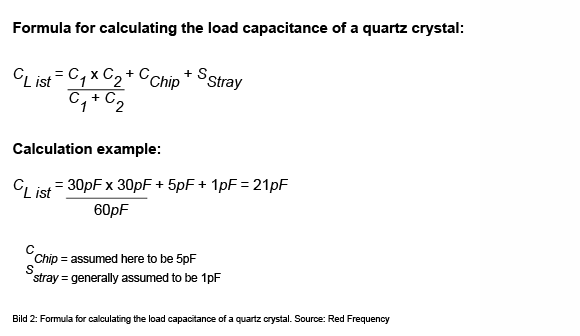
| DE | EN | Contact | About us | Terms of Business | Imprint | Privacy & Cookies | Help | Newsletter | Registration | Login | |
 |  |  |  |  |  |  |  |  |  |  |  |
| Home > News > Case Studies > Passive and Electromechanical > How do you find the right quartz crystal? | |||||||||||
How do you find the right quartz crystal?We reveal the six most important selection criteriaChoosing the right quartz crystal poses problems for both developers and buyers, because they often don't know the exact specifications and each quartz group has numerous subcategories. With a focus on six crucial factors, the right quartz crystal can be determined easily.
When faced with the task of buying a quartz oscillator or designing one into a new development at the right time, it makes sense to get to know with the characteristics of these frequency control components in advance. Six criteria have to be considered when you are looking for a reliable quotation. Six selection criteria:• Package form: A hermetically sealed and radially wound metal package is generally used with quartz crystals for conventional mounting (THT), including for clock crystals with a frequency of 32.768MHz. With this type, the packages are typically over 6mm long, and are therefore not suitable for space-saving applications. Quartz crystals in SMD packages offer considerably more compact constructions, measuring for example just 1.6x1.2x0.3mm. Note: For technical reasons, a quartz oscillator cannot be reduced in size arbitrarily; i.e. not every quartz crystal is available in every mounting form. • Frequency: The frequency of common quartz crystals lies between 32.768kHz and approx. 200MHz. Quartz crystals with higher frequencies are usually available in smaller mounting forms. Thus, an 8MHz quartz crystal measures around 7x5mm while a 20MHz quartz crystal just 2x1.6mm – crucial for circuit design. • Operating temperature range: Quartzs demonstrate a certain level of temperature dependency. If the limit values of the datasheet are overstepped, this does mean that problems necessarily occur immediately, and, depending on the circumstances, operation can continue. However, this prevents the application from staying with the guaranteed tolerances. • Frequency tolerance at 25°C: By specifying the frequency tolerance (= maximum expected total deviation from the rated frequency at an ambient air temperature of +25°C and operation within the permitted parameters), the manufacturer guarantees that the oscillating frequency of the quartz crystal will stay within the permissible range. By choosing a suitable frequency tolerance, the best possible solution in terms of economical operation and functional security can be achieved for the demands of the particular application. • Frequency stability across operating temperature range: Manufacturers specify both frequency stability across the operating temperature range and frequency deviation in ppm per K change in temperature. Developers can therefore take temperature influences into account in advance and compensate if necessary. Tip: For particularly high demands on frequency stability, it makes sense to look at using temperature-compensated crystal oscillators. • Load capacitance: The right load capacitance (CL) of the oscillator circuit (= capacitance C, which the quartz oscillator recognises at its connections) is crucial when it comes to maintaining the frequency as precisely as possible. Manufacturers trim quartz crystals so that they operate within the promised range across the specified range of the load capacitance. Specific alterations in the load capacitance makes it possible to change the frequencies of the quartz crystals slightly, optimising them for particularly high frequency-precision requirements. Known as "pullability," this characteristic of quartz crystals, however, is limited – if you exceed the tolerance sensitivity, steady oscillation is no longer assured. Implementation tip:
If you have specified all six criteria, you can obtain a quotation tailored to exactly your requirements quickly and easily from your distributor. It should be noted at this point that type designations vary from manufacturer to manufacturer. A corresponding Ordering Guidance helps with classification. We are happy to advise and support you in selecting the right quartz crystals for your individual project. In the webshop we have for you the quartz crystals and quartz oscillators of the manufacturer Red Frequency. |
|

